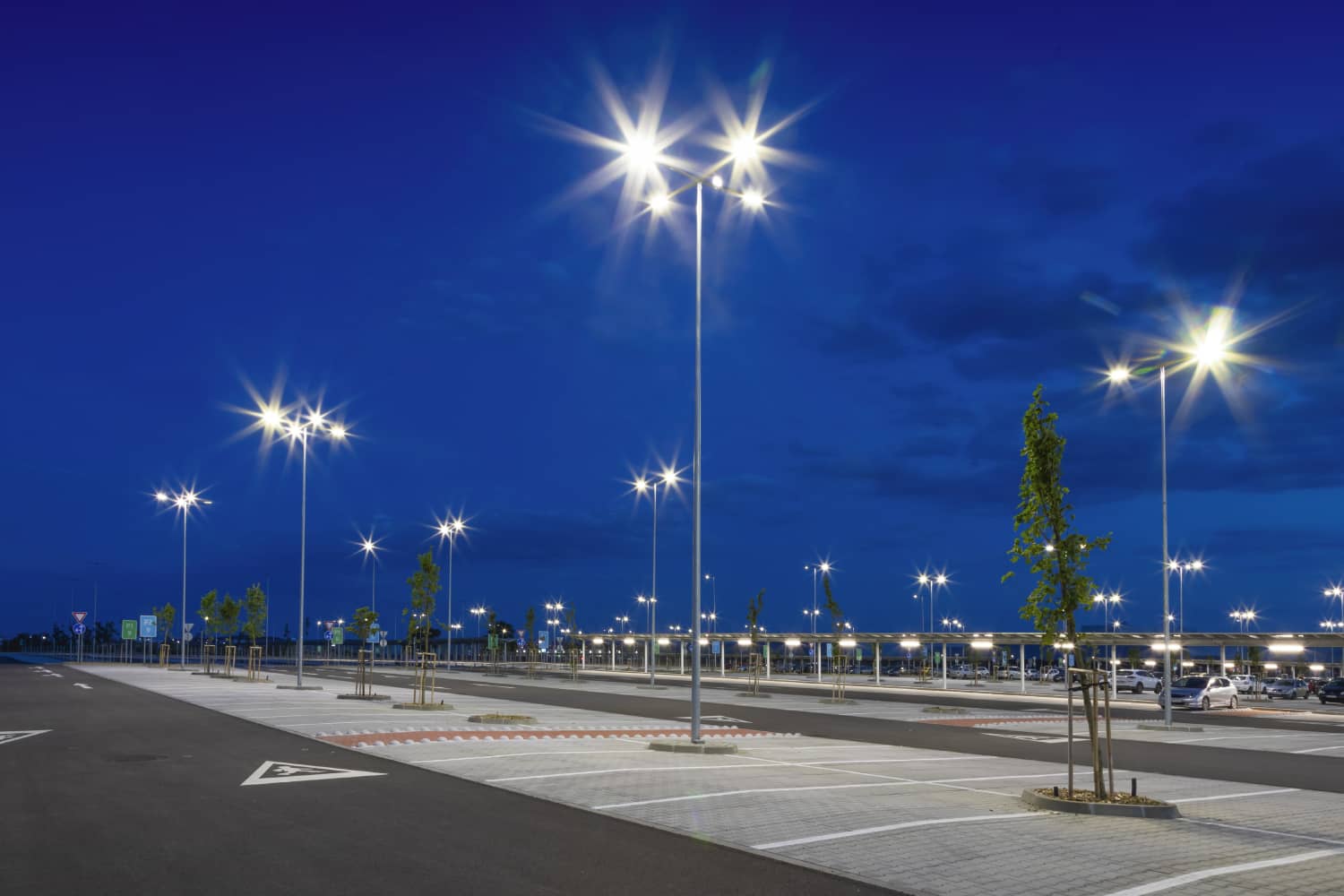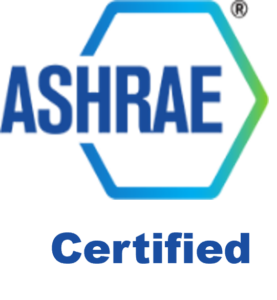Energy Savings & Efficiency
Our energy experts can help you achieve compliance with Washington Clean Buildings Performance Standard
Energy efficiency is the use of less energy to perform the same task or produce the same result. Energy efficiency is one of the easiest and most cost-effective ways to combat climate change, reduce energy costs for consumers, and improve the competitiveness of U.S. businesses.
Energy Use Intensity (EUI) is expressed as energy per square foot per year. It’s calculated by dividing the total energy consumed by the building in one year (measured in kBtu) by the total gross floor area of the building (measured in square feet).
Pro Mechanical Services can help you achieve Energy Use Intensity target (EUIt) in multiple ways including helping you achieve compliance with Washington Clean Buildings Performance Standard.

Upgrade Lighting
In commercial buildings, lighting can account for almost 1/3 of the energy use, and even more in medical facilities and warehouse buildings. Old lighting equipment has a substantial impact on power consumption.
By order of efficiency, the least efficient lighting type is incandescent, followed by metal halide, fluorescent, and LED being most efficient. Upgrading to new lighting technology can result in considerable savings. With current rebates and relatively short ROI time, this is typically one of the easiest and most cost-effective methods of EUI reduction.
Meter and Submeter
Don’t wait for a bill from the utility to tell you what it costs to operate your building. Monitoring your own energy use and having proper evaluation of that usage can help you determine and anticipate peak usage periods. It will also help to determine where your energy loads are highest.
HVAC
If you have an intelligent Building Controls System – use it. You can reduce costs by customizing building schedules for tenants and properly evaluating comfort requirements.
If you don’t have a Building Management System (BMS), there may be equipment or areas of your building where it makes sense to add direct digital controls (DDC) to increase equipment operating efficiency.
Occupancy Sensors
Some areas of your building can be “turned off” for most operating hours throughout the day.
Having HVAC schedules customized for equipment, along with occupancy sensors for common areas and other targeted spaces can reduce energy costs when they aren’t needed by relaxing setpoints or turning equipment off completely when it isn’t needed.
Demand Ventilation
Having a good Indoor Environment Quality is a paramount concern for building occupants.
Adding CO2 monitoring and control will not only provide assurance of IEQ but will also allow for reduced minimum outside airflow which, in turn, will reduce the volume of conditioned air requirements in spaces that don’t need it. (This means cost savings.)
Repair Equipment
Proper evaluation of meter data and use of the building automation system (BAS), will provide a means to identify equipment failures or even predict equipment failures, allowing repairs to be made.
This will prevent long periods of energy waste. When equipment fails, replace with more efficient model equipment.
Air Test Balance
Accounting for airflow that is going to each space, as well as balancing what is going in and out of your building and reducing minimum airflows, can help save energy.
Air Handler Control
Add VFD control of air handlers and other equipment fans. With airflow pressure resets for AHUs or having designed cooling/heating/satisfied airflow setpoints you will maximize unit efficiency. Check with us to see if there are any rebates for it offered by your utility company.
Train Building Occupants
Train and instill a new way of thinking in your building occupants (staff and tenants). Reducing energy use will save everyone money. Success will be more attainable when we all work as a team to reach a common goal.
Energy Reduction Goals
Target the low hanging fruit with the lowest cost for the greatest savings first. This will be identified during an audit. Then we can help you set goals to achieve more efficiency and more savings for the future.
Washington Clean Buildings Performance Standard
The Washington Clean Buildings Performance Standard places emphasis on reducing greenhouse gas emissions from the building industry by establishing a cap on energy used in commercial buildings 50,000 square feet and larger. Building owners are required to reduce energy use to a specific target report performance and continue to manage and maintain energy efficiency.
Qualified Energy Personnel

With our experience in building energy-use analysis, we can determine a facility’s current baseline Energy Use Intensity (EUI). Using information on your building’s area and use type, we can provide the target EUI score (EUIt) that you will need to achieve to meet the CBPS compliance. We are certified by the Association of Energy Engineers (AEE).
Qualified Energy Auditor

Pro Mechanical Services has the experience, training, and certification to perform ASHRAE level 1, 2 and 3 audits as required by section 8 of the standard as well as submittal of an audit summary in accordance with annex Z. An energy auditor is also able to sign all documents and forms required to be filed to demonstrate compliance. Once we complete the audit, we will review it with you, provide feedback, and verify the energy savings of each EEM. We will help you determine the EEMs that make sense for your facility. We are ASHRAE certified.
Energy Manager
We can ensure that energy use in your building is minimized without compromising the indoor environmental quality (indoor air quality, thermal comfort, visual acuity and comfort, sound quality). We develop and maintain your energy management plan.
Building Operator
The party or parties who have the responsibility to inspect, operate, and maintain the building systems and components that fall within the scope of this Standard. Pro typically performs this role in small and mid-size facilities. We also partner with other appropriate parties to deliver on the Standard.
Timeline for achieving the Washington Clean Building Performance Standard
Tier 1 buildings must meet the following reporting schedule:
- June 1, 2026 – 220,001+ square feet
- June 1, 2027 – 90,001 – 220,000 square feet
- June 1, 2028 – 50,000 – 90,000 square feet
If you meet compliance requirements early, you may be eligible to apply for the Early Adopter Incentive Program.
Early Adopter Incentive Program
RCW 19.27A.220, State Energy Performance Standard: The Early Adopter Incentive program began July 1, 2021 and applies to non-residential, hotel, motel and dormitory buildings greater than 50,000 sq. ft.
Qualifications for applying to this program
The building must be a Tier 1 or multi-family building over 50,000 sq. ft.
- The building must be served by at least one electric utility, gas company or thermal energy company providing or delivering energy services.
- This is a Washington state incentive and can be administered in addition to utility conservation incentives.
- Utilities who do not pay public utility taxes are not eligible to participate in the Early Adopter Incentive program.
- The building must be 15 energy use intensity (EUI) or more above the target.
- The building must be brought into full compliance with the Clean Building Performance Standard and meet its energy use intensity target (EUIt).
An eligible building owner that demonstrates early compliance with the Washington Clean Buildings Performance Standard may receive a one-time base incentive payment of $.85 per sq. foot, excluding parking, unconditioned or semi-conditioned spaces.
Incentive funds are limited to $75 million.
Find frequently asked questions about the Incentive Program here.
Commercial Lighting
Upgrade lighting to reduce energy consumption and costs while promoting active engagement, productivity, and safety. Commercial LED lighting helps your organization to reduce operational costs, improve energy efficiency and become more eco-friendly.
Lighting costs can account for up to 45% of energy spend—organizations can dramatically reduce these costs by working with an energy efficiency company like Pro Mechanical Services to upgrade their lighting to a more energy-efficient solution.
In addition to significant cost savings, employee productivity increases when lighting is optimized to task and time of day. According to research, 68% of employees complain about the lighting in their workplace.
Having the right lighting is becoming a more critical issue for employers. While natural light is best for workers, LED is an ideal alternative for indoor environments.
Multiple studies have shown that optimized LED lighting dramatically improves employee performance in visual and cognitive tasks, reduces fatigue, increases activity, improves reaction times, and boosts morale.
Back-up Generation
When you need to maintain power to keep your business running smoothly, a commercial standby generator is a necessity. With permanent outdoor installation, you’ll never have to worry about an outage halting business again.
A commercial backup generator will kick in within seconds of detecting a power outage whether you’re open or closed. Installing a commercial emergency generator will protect your business day and night, no matter the weather.
Pro Mechanical Services is a Generac dealer and can help you procure and install your back-generation. We support all kinds of needs: commercial buildings, data centers, healthcare, municipal, telecommunications, education, manufacturing and entertainment.
Expertise
- Manage HVAC systems and energy usage
- Monitor facilities remotely
- Manage and monitor surveillance and security systems
- Analyze trends and critical alarms; make recommendations
- Track traffic within a facility
- Monitor air quality
Capabilities
- Access Control
- BAC/DDC/PLC
- Consulting
- Documentation
- Energy Analytics
- Facility Solutions
- HMI Programming
- Honeywell ACI Contractor
- Installation
- Lighting
- Networking
- Performance Tuning
- PLC Programming
- Project Management
- Retro Commissioning
- Sub-metering
- System Analysis
- System Integration
- System Programing
- Training

